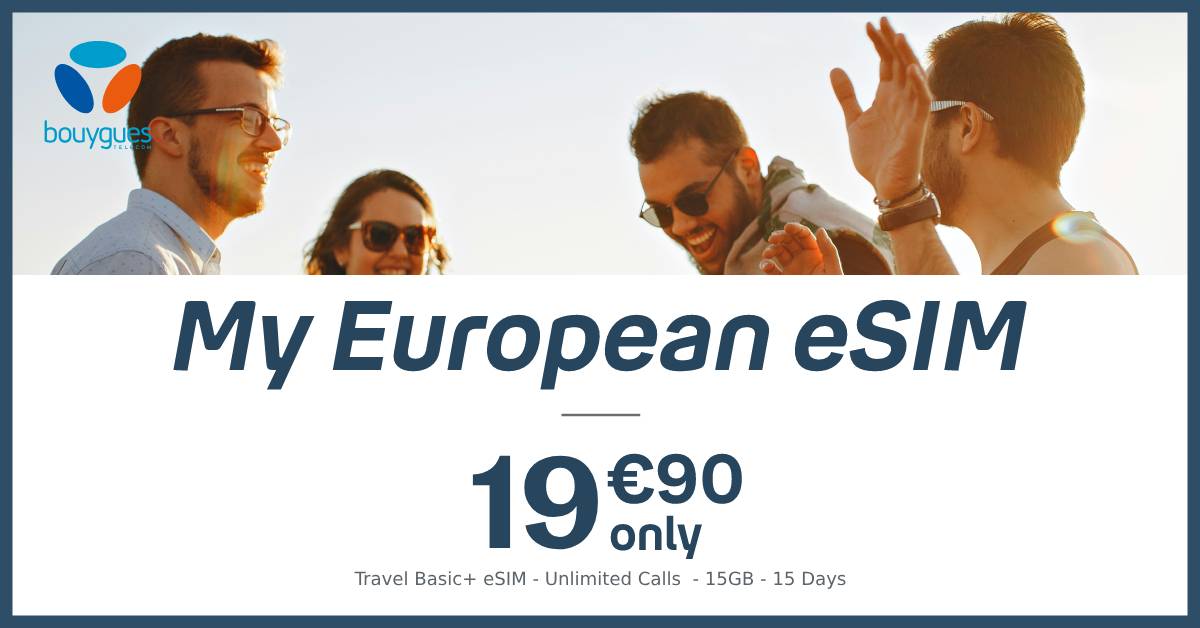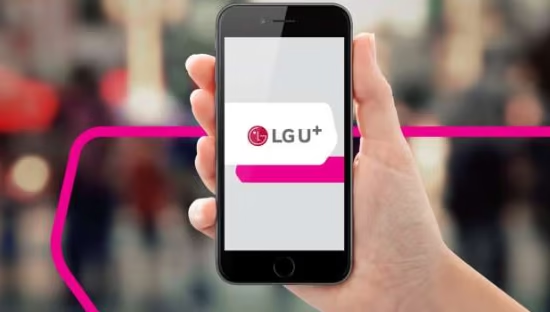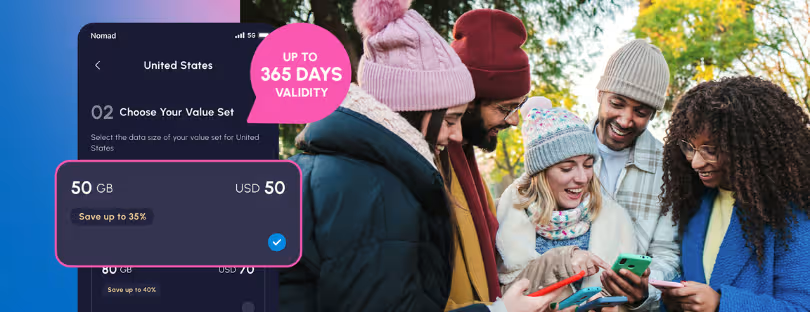
Inbound Goldmine: Why Local eSIM Sales Are the Next Big Win for MNOs
For years, inbound roaming was the golden goose for mobile network operators (MNOs). Tourists landed, switched on their phones, and their home operators billed them at sky-high rates. Local MNOs earned their share through wholesale inter-operator tariffs (IOTs), and everyone in the chain profited—except the traveler who faced shocking bills for watching a few videos abroad.
That model is collapsing.
Regulation, consumer awareness, and new digital competition have changed the game. The EU’s 2017 “Roam Like at Home” rules removed retail roaming surcharges within the bloc, and other regions are following suit. Travelers now search for alternatives long before departure, and global eSIM marketplaces like Airalo, Airhub, and Nomad offer cheaper, easier connectivity across 200+ destinations. In short, the old roaming revenue base is shrinking—and fast.
Enter local eSIMs
Here’s the shift that flips the model: eSIM. With an embedded SIM (eUICC), a user can remotely download and activate a mobile subscription using GSMA’s Remote SIM Provisioning (RSP) architecture—no plastic card, no shop, no hassle. A local eSIM can be purchased and activated before the traveler even boards their flight.
For MNOs, this is a massive opportunity. Instead of relying on wholesale roaming fees, they can sell prepaid eSIMs directly to inbound visitors at full retail margin. It’s digital-first and high-margin, and it gives operators a direct customer relationship that roaming never did.
Why travelers prefer local eSIMs
Modern travelers want control. Imagine planning a trip to Barcelona:
- Roaming on your home SIM feels risky and expensive.
- Global eSIM aggregators are convenient but may charge a markup or use partner networks with limited priority access.
- Buying a local prepaid eSIM from the actual network—Vodafone, Orange, or Movistar—offers better rates, top-tier coverage, and direct support.
The third option is quickly becoming the obvious choice. It’s reliable, flexible, and transparent. Once that eSIM profile is installed, the local MNO’s brand sits permanently on the traveler’s device, ready for future trips.
The inbound goldmine for MNOs
Local prepaid eSIMs aren’t just a new sales channel—they’re a full inbound revenue engine. Here’s why:
- MNOs keep the entire retail margin instead of splitting wholesale revenue.
- They can upsell add-ons like social media passes, extra gigabytes, or travel bundles.
- Direct activation gives access to valuable user data—location, usage, seasonality—fueling smarter offers.
- Each inbound user becomes a potential repeater who buys again on future visits.
- Partnerships with airlines, hotels, or travel agencies can turn eSIMs into part of a larger travel ecosystem.
In other words, it’s not just about replacing lost roaming income—it’s about building a new inbound funnel.
Who’s already doing it
Some MNOs have already spotted the opportunity.
In Singapore, Singtel’s hi!Tourist eSIM can be purchased entirely online and activated upon arrival—no airport kiosk needed. In Germany, prepaid eSIMs from brands such as O2 are available online, with activation after mandatory ID verification via video-ident or PostIdent, where a passport works among other documents. In Mexico, AT&T’s AT&T Go prepaid eSIMs can be ordered online, offering a local option for travelers with compatible devices.
Where digital onboarding and ID checks are streamlined, local operators are successfully reclaiming inbound customers who would otherwise turn to global aggregators.
Why MNOs are slow—and why they can’t be
Operators face real barriers. Legacy billing systems weren’t designed for non-resident activations. ID verification varies by market and adds friction. And consumer eSIM sales often sit outside traditional retail structures, which depend heavily on physical SIM distribution.
But none of these challenges matter to travelers—they just expect an easy digital journey. If a global marketplace can deliver a working eSIM in two minutes, users won’t wait for an operator to catch up. Each lost traveler is a lost long-term relationship. MNOs that move too slowly risk becoming invisible in the eSIM era.
The playbook for success
The good news? Operators already have what they need: spectrum, infrastructure, and local trust. To unlock the inbound goldmine, they only need to modernize distribution.
- Streamline onboarding. Partner with digital ID providers to verify travelers in seconds.
- Sell globally, not locally. Promote eSIMs on search, airline sites, and travel platforms before arrival.
- Bundle creatively. Combine eSIM data with airport transport, entertainment passes, or city discounts.
- Prioritize user experience. One QR code, instant activation, and multi-language support.
- Go regional. Extend eSIM coverage across neighboring countries—French travelers love knowing their plan also works in Spain.
This isn’t about copying aggregators; it’s about beating them with stronger networks and better prices.
The inbound eSIM flywheel
Once an MNO perfects inbound eSIM sales, a self-reinforcing cycle begins. Tourists buy local eSIMs because they’re cheaper and more reliable. The operator gathers anonymized data on usage and travel patterns, refines offers, launches seasonal campaigns, and gets more digital word-of-mouth. Each trip strengthens brand familiarity. Eventually, the local eSIM becomes a default choice—just like booking a familiar airline.
Why this matters now
The timing couldn’t be better. eSIM adoption is accelerating thanks to device manufacturers and regulatory support. Apple made the iPhone 14 eSIM-only in the U.S., pushing the entire industry toward digital activation. Google and Samsung have expanded dual-eSIM functionality, and analysts expect hundreds of millions of eSIM-capable phones to ship annually by 2028, with Europe, North America, and Asia-Pacific leading adoption.
That’s the inflection point. Travelers no longer ask, “What is an eSIM?” They’re asking, “Which one should I buy?” The MNO that answers that question clearly—through a frictionless digital offer—wins the inbound traveler before they land.
A new era for inbound
Inbound roaming margins are being squeezed from every side: regulatory caps, OTT alternatives, and traveler expectations. Local prepaid eSIMs replace that uncertainty with a scalable, customer-owned model. They position MNOs as digital retailers, not wholesale suppliers. They turn anonymous roamers into identifiable, re-targetable customers.
This evolution also expands collaboration possibilities—think tourism boards, airlines, or hospitality partners that can bundle connectivity as part of a broader visitor experience. Connectivity becomes not just a utility but a welcome amenity.
Final thought
MNOs have been staring at the inbound problem through the wrong lens. The answer isn’t tweaking roaming packages or disguising fees; it’s flipping the model entirely. Selling local prepaid eSIMs directly to inbound visitors keeps revenue on home soil, builds brand loyalty, and meets modern travelers exactly where they are—online, mobile, and impatient.
Inbound eSIMs aren’t just a patch for lost roaming—they’re the foundation of a smarter, more profitable digital future for operators. The gold mine is open. The question is simple: who will start digging first?











